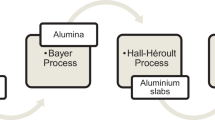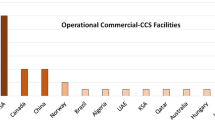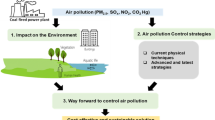Abstract
This study aimed to improve equipment in steel industrial in order to save energy, protect the environment, decrease costs, and develop the commercialization improvements. The energy of combustion gases in the reformer box is used to preheat the main air, natural gas, and feed gas in the heat recovery system. The scale-up of process equipment and incorporation of new technologies at the Khouzestan steel company (KSC) in Iran, resulted in their ironmaking plants’ capacity increasing from 550,000 to 800,000 ton/year in 2015. Furthermore, this method could prove profitable for old direct reduction ironmaking plants as well. The modifications include changing the reformer tubes’ diameter to increase the rate of reducing gas flow, increasing the number of process gas compressors from two to three, improving the top gas scrubber capacity, and modifying the shaft furnace refractory thickness to the thin wall. (The internal diameter of the furnace was increased from 5000 to 5130 mm.) To use the flue gas energy, the arrangement, size, and number of tube bundles were altered in heat recovery system (HRS). The reformer and heat recovery system were simulated with Aspen HYSYS software. The simulation results were relatively in good agreement with the experimental data. In this research, practical results with a real implementation in direct reduced ironmaking plant show equipment improvement that can reduce energy consumption and carbon dioxide emissions. The production tonnage increased by 28.15%, and the energy consumption decreased by 13.71%. However, the amount of carbon dioxide in the flue gas decreased by 9.55%. The flue gas exit temperature from HRS dropped by 152.2 °C. The calculation of the net present value (NPV) and present value (PV) shows that the investment cost will be returned in 4 years.
Graphical abstract













Similar content being viewed by others
Abbreviations
- V 1 :
-
The volume of reformer tube before revamping (m3)
- V 2 :
-
The volume of reformer tube after revamping (m3)
- Q :
-
Heat transfer flow rate (kJ/h)
- PV:
-
Present value
- FV:
-
Future value
- NPV:
-
Net present value
- r :
-
Interest rate
- n :
-
Number of years
References
Abrar B, Halali M, Pourfathi A (2016) Recovery of nickel from reformer catalysts of direct reduction, using the pressurized dissolving method in nitric acid. Eng Technol Appl Sci Res 6:1158–1161
Alvarez EA, Trashorras AJG, Cuesta JMS, Bernat JX (2012) Steel mill slags energy potential: the case of the steel factory of Arcelor-Mittal in Asturias (Spain). Clean Technol Environ Policy 14:869–877. https://doi.org/10.1007/s10098-012-0455-8
Ansari N, Seifi A (2012) A system dynamics analysis of energy consumption and corrective policies in Iranian iron and steel industry. Energy 43:334–343
Arunkumar Samanta AZ, Shimizu GKH, Sarkar P, Gupta R (2012) Post-combustion CO2 capture using solid sorbents: a review. Ind Eng Chem Res 51(4):1438–1463. https://doi.org/10.1021/ie200686q
Atsushi M, Uemura H, Sakaguchi T (2010) MIDREX® processes. Kobelco Technol Rev 29:50–57
Chen W, Geng W (2017) Fossil energy saving and CO2 emissions reduction performance, and dynamic change in performance considering renewable energy input. Energy 120:283–292. https://doi.org/10.1016/j.energy.2016.11.080
Czyrnek-Delêtre MM, Chiodi A, Murphy JD, Ó Gallachóir BP (2016) Impact of including land-use change emissions from biofuels on meeting GHG emissions reduction targets: the example of Ireland. Clean Technol Environ Policy 18:1745–1758. https://doi.org/10.1007/s10098-016-1145-8
de Freitas SMAC, Sousa LN, Diniz P, Martins ME, Assis PS (2018) Steel slag and iron ore tailings to produce solid brick. Clean Technol Environ Policy 20:1087–1095. https://doi.org/10.1007/s10098-018-1513-7
Dehghan Shabani Z, Shahnazi R (2019) Energy consumption, carbon dioxide emissions, information and communications technology, and gross domestic product in Iranian economic sectors: a panel causality analysis. Energy 169:1064–1078. https://doi.org/10.1016/j.energy.2018.11.062
Hansen J, Ruedy R, Sato M, Lo K (2010) Global surface temperature change. Rev Geophys 48(4):1–29. https://doi.org/10.1029/2010RG000345
Hasanbeigi A, Morrow W, Sathaye J, Masanet E, Xu T (2013) A bottom-up model to estimate the energy efficiency improvement and CO2 emission reduction potentials in the Chinese iron and steel industry. Energy 50:315–325. https://doi.org/10.1016/j.energy.2012.10.062
Hasanbeigi A, Arens M, Price L (2014) Alternative emerging ironmaking technologies for energy-efficiency and carbon dioxide emissions reduction: a technical review. Renew Sustain Energy Rev 33:645–658. https://doi.org/10.1016/j.rser.2014.02.031
Hou K, Hughes R (2001) The kinetics of methane steam reforming over a Ni/α-Al2O catalyst. Chem Eng J 82:311–328
Janssens-Maenhout G et al (2017) Fossil CO2 & GHG emissions of all world countries. Joint Research Center, Brussels
Khoshnevisan B, Rafiee S, Omid M, Mousazadeh H (2013) Reduction of CO2 emission by improving energy use efficiency of greenhouse cucumber production using DEA approach. Energy 55:676–682. https://doi.org/10.1016/j.energy.2013.04.021
Lotfalipour MR, Falahi MA, Ashena M (2010) Economic growth, CO2 emissions, and fossil fuels consumption in Iran. Energy 35:5115–5120. https://doi.org/10.1016/j.energy.2010.08.004
Mahlia TMI, Lim JY, Aditya L, Riayatsyah TMI, Pg Abas AE, Nasruddin (2018) Methodology for implementing power plant efficiency standards for power generation: potential emission reduction. Clean Technol Environ Policy 20:309–327. https://doi.org/10.1007/s10098-017-1473-3
Mohammadnejad M, Ghazvini M, Mahlia TMI (2014) Fuel economy standards for light duty vehicles and their potential to aid Iran toward achieving fuel saving and emissions reduction. Clean Technol Environ Policy 16:661–666. https://doi.org/10.1007/s10098-013-0668-5
Nejat P, Jomehzadeh F, Taheri MM, Gohari M, Abd. Majid MZ (2015) A global review of energy consumption, CO2 emissions and policy in the residential sector (with an overview of the top ten CO2 emitting countries). Renew Sustain Energy Rev 43:843–862. https://doi.org/10.1016/j.rser.2014.11.066
Olivier JG, Schure K, Peters J (2017) Trends in global CO2 and total greenhouse gas emissions. PBL Netherlands Environmental Assessment Agency
Pishgar-Komleh SH, Ghahderijani M, Sefeedpari P (2012) Energy consumption and CO2 emissions analysis of potato production based on different farm size levels in Iran. J Clean Prod 33:183–191. https://doi.org/10.1016/j.jclepro.2012.04.008
Ravenscroft C (2012) Reducing the world steel industry’s carbon footprint through Direct Reduction & C. Midrex. Iron Steel Technol 13(4):91–100
Ridha FN, Manovic V, Macchi A, Anthony EJ (2015) CO2 capture at ambient temperature in a fixed bed with CaO-based sorbents. Appl Energy 140:297–303
Rogelj J et al (2016) Paris Agreement climate proposals need a boost to keep warming well below 2 C. Nature 534:631
Roy M, Basu S, Pal P (2017) Examining the driving forces in moving toward a low carbon society: an extended STIRPAT analysis for a fast growing vast economy. Clean Technol Environ Policy 19:2265–2276. https://doi.org/10.1007/s10098-017-1416-z
Szulejko JE, Kumar P, Deep A, Kim K-H (2017) Global warming projections to 2100 using simple CO2 greenhouse gas modeling and comments on CO2 climate sensitivity factor. Atmos Pollut Res 8:136–140
Tans P, Keeling R (2014) Trends in atmospheric carbon dioxide NOAA/ESRL & Scripps Institute of Oceanography. http://www.esrlnoaagov/gmd/ccgg/trends/. Accessed Jan 2012
TheWorldBank (2014) Carbon_dioxide_emissions in Iran. The World Bank. https://www.theglobaleconomy.com/Iran/Carbon_dioxide_emissions/
Tsuji T, Shinya Y, Hiaki T, Itoh N (2005) Hydrogen solubility in a chemical hydrogen storage medium, aromatic hydrocarbon, cyclic hydrocarbon, and their mixture for fuel cell systems. Fluid Phase Equilib 228:499–503
Wang C, Larsson M, Yan J, Dahl J (2007a) CO2 emission reduction in the steel industry by using emission trading programs. Int J Green Energy 4:505–518. https://doi.org/10.1080/15435070701583094
Wang K, Wang C, Lu X, Chen J (2007b) Scenario analysis on CO2 emissions reduction potential in China’s iron and steel industry. Energy Policy 35:2320–2335. https://doi.org/10.1016/j.enpol.2006.08.007
Wang H, Ang BW, Su B (2017) A multi-region structural decomposition analysis of global CO2 emission intensity. Ecol Econ 142:163–176. https://doi.org/10.1016/j.ecolecon.2017.06.023
Xu C, D Cang (2010) A brief overview of low Co2 emission technologies for iron and steel making. J Iron Steel Res Int 17:1–7. https://doi.org/10.1016/S1006-706X(10)60064-7
Acknowledgements
We would like to thank the KSC management for providing us with the relevant information, which was essential for this research. It is important to mention that this research received no specific grant from any funding agency in the public, commercial, or not-for-profit sectors.
Author information
Authors and Affiliations
Corresponding author
Additional information
Publisher's Note
Springer Nature remains neutral with regard to jurisdictional claims in published maps and institutional affiliations.
Rights and permissions
About this article
Cite this article
Mohsenzadeh, F.M., Payab, H., Abedi, Z. et al. Reduction of CO2 emissions and energy consumption by improving equipment in direct reduction ironmaking plant. Clean Techn Environ Policy 21, 847–860 (2019). https://doi.org/10.1007/s10098-019-01672-6
Received:
Accepted:
Published:
Issue Date:
DOI: https://doi.org/10.1007/s10098-019-01672-6




